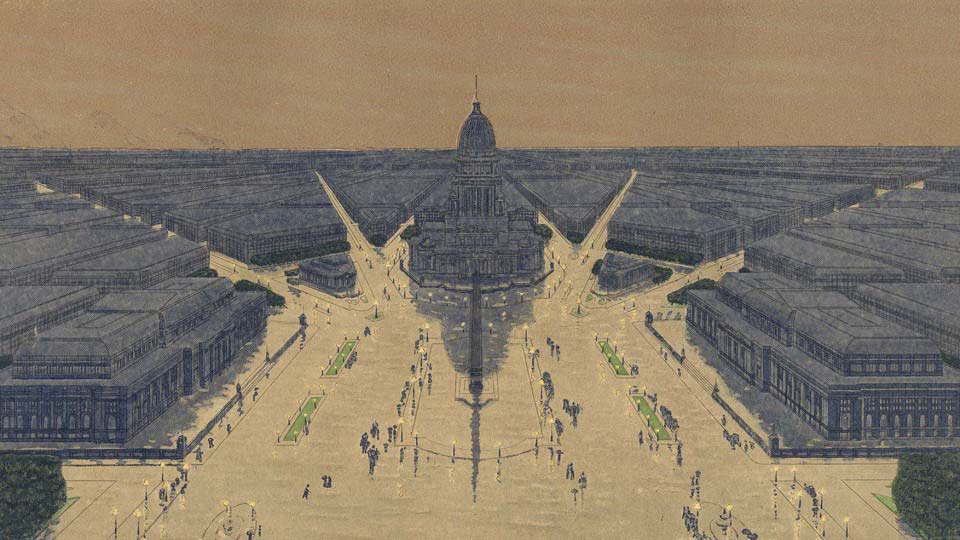
1909 PLAN OF CHICAGO

The 1909 Plan of Chicago, also commonly referred to as the “Burnham Plan,” was a visionary Progressive Era proposal that sought to beautify Chicago and improve efficiency of commerce. Published through the support of the Commercial Club of Chicago, the plan used renderings to convey the possible scenarios for a rapidly growing city. Although many of its aspirational ideas never became reality, as a document, the Plan of Chicago continues to serve as a reference in urban design today.
Beginning in 1906, a group of businessmen recognized the need to prepare a plan for Chicago’s growth and entrusted architect Daniel Burnham to develop a plan to address Chicago’s needs. Already famous for his role as Director of Works for the 1893 World’s Columbian Exposition in Chicago, Daniel Burnham famously affirmed that Chicago should “make no little plans” for its future. He hired co-author Edward H. Bennett, then the two began their work.
Over the course of nearly three years, Burnham and Bennett researched numerous cities around the world. They studied how the growth of these cities and how large-scale infrastructure influenced the economy and mobility of their inhabitants. As a result, the Plan of Chicago was broken down into six categories and focused on the economic, transportation and social needs of Chicagoans.
